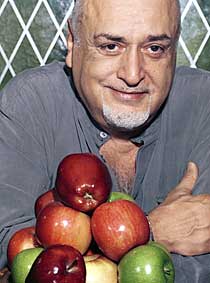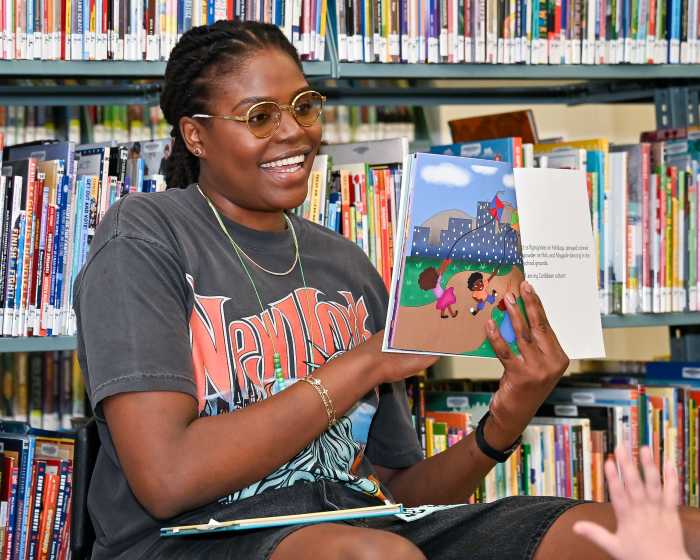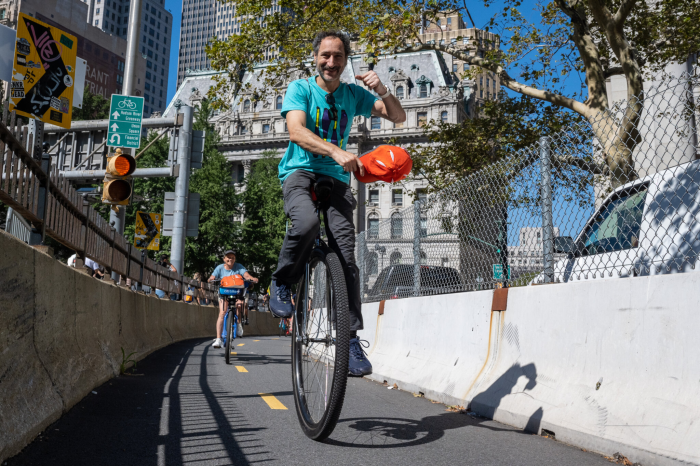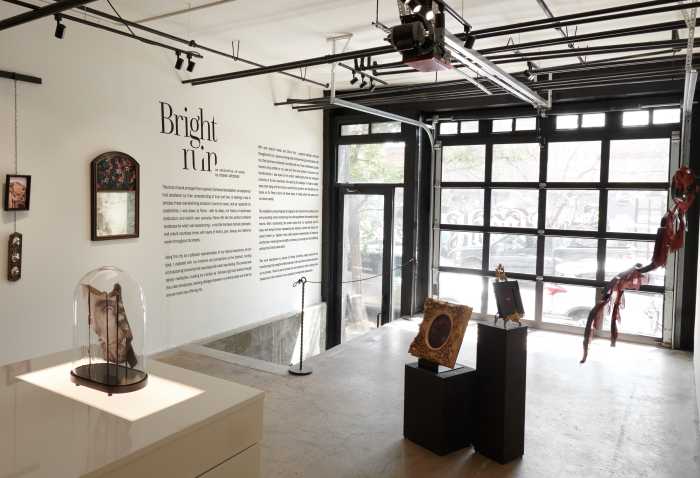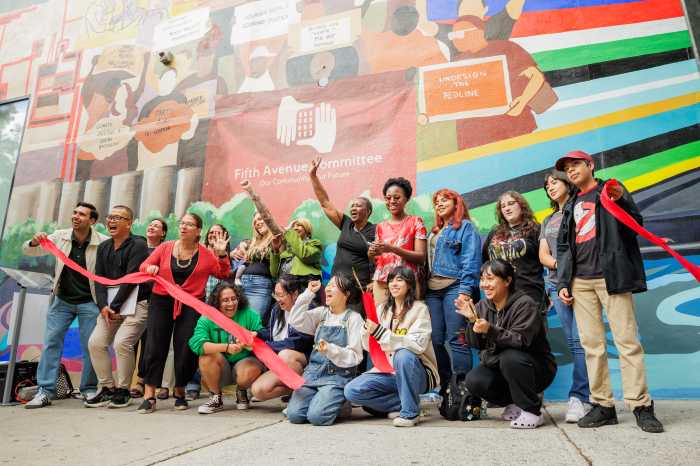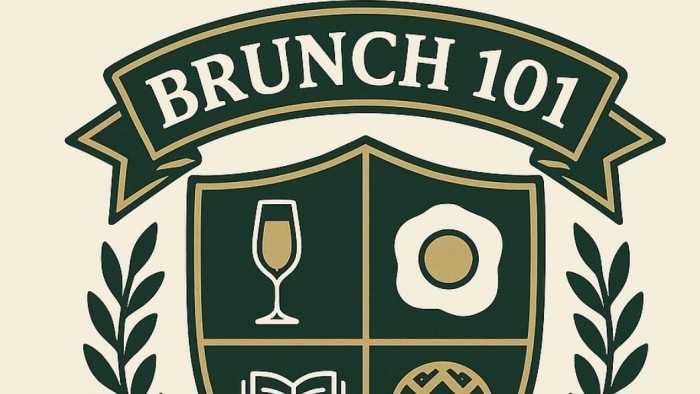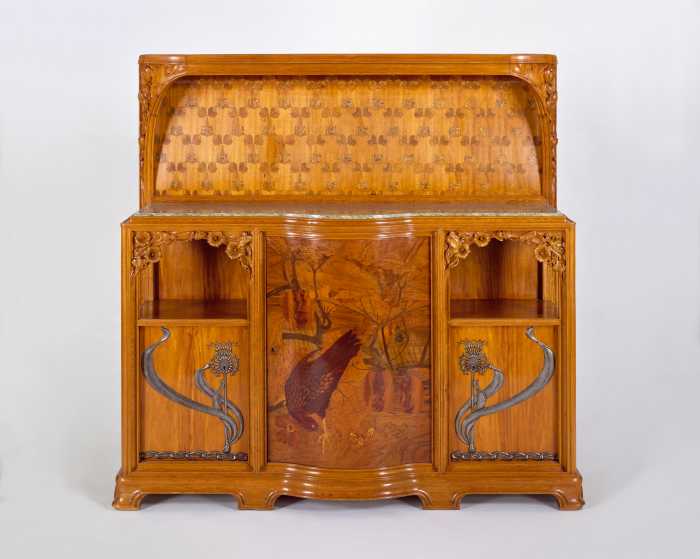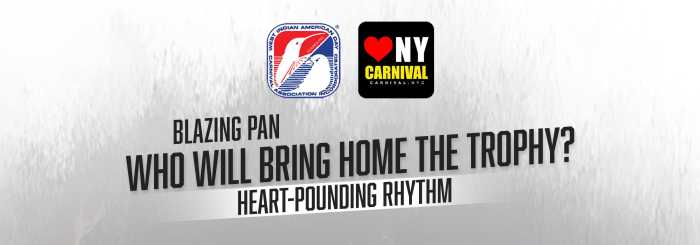I wanted to create a book that is an honest
account of what artists eat and cook," author Frank Fedele
says about his first book, "The Artist’s Palate: Cooking
with the World’s Great Artists."
Fedele’s new book is a meeting of the gastronomic and visual
arts. Eighty-nine artists past and present are revealed in the
most intimate way – by the food they ate for sustenance and by
what they consumed and shared with others for pleasure.
When recollections were sketchy or writing illegible, Fedele,
of Bay Ridge, turned to well-known chefs to recreate some of
the 129 recipes.
Over coffee in Park Slope’s Ozzie’s, Fedele, who describes himself
as a "latent Dadaist and surrealist sculptor turned art
dealer," recalled the inspiration for his unique cookbook
and the six-year journey he undertook to research and write it.
"In 1995, I was curating a show and I mentioned to someone
that I visit a lot of artist’s studios and love the smell of
their cooking," said Fedele. "They thought the story
of artists and what they eat was a good idea for a book. At first
I thought I’d include only the living artists I knew. But the
idea kept growing. Someone said they knew of a Toulouse-Lautrec
recipe, and after hearing that comment, I decided to bring in
artists of the past."
Through Frank Fedele Fine Arts on 57th Street in Manhattan, the
gallery he owned from 1981-1994, he met and shared meals with
many art world luminaries. Each artist in the book is described
with a personal anecdote, or the recollections of friends or
family members who knew them. Photos of the artists and excellent
color reproductions of their work are included.
"Writing the book," said Fedele, "was like digging
for dinosaur bones. I’d come across something, gently sweep away
the dirt, and find a recipe.
"I had so many Eureka moments," he added. "I lived
in the New York and Brooklyn libraries. I talked to relatives
of artists and cooks all over the world. Sometimes things just
fell from the sky."
While Fedele watched a television show about the restoration
of the Sistine Chapel, an image flashed on the screen that looked
like a grocery list. Fedele contacted the show’s director who
sent him the information he requested. His guess was correct.
"At that time," said Fedele, "servants were illiterate.
So Michelangelo drew three bunches of grapes, a carafe of wine,
fish, anything he wanted."
In the book, Chef and Food Network host Mario Batali translates
the list into a recipe for halibut in a cool summer gazpacho.
The reader is treated to elaborate feasts like Alexander Calder’s
"Flying Colors Menu" – five recipes with suggestions
for wines and liquors, side dishes and after-dinner drinks; "Two
Hot Mexican Chiles" from Mexican muralist Diego Rivera describes
both his recipe and second and third wives – second wife Lupe
Marin Rivera who taught third wife, artist Frida Kahlo, to cook;
and Swiss artist Paul Klee’s "Taschenkalender (pocket diary)
Menu" with a recipe for bacon-spiced roast beef with burgundy
sauce. (A reproduction of Klee’s diary is displayed near the
recipes.)
In the "Appetizers, Sides and Salads" section, Fedele
writes: "Vincent van Gogh was totally consumed by his art
and sustained himself through the act of painting. He had little
interest in eating." When his hunger overwhelmed him, van
Gogh ate bread, Gouda cheese and drank absinthe, a liqueur made
from anise and wormwood oil that caused hallucinations.
About the Abstract Expressionist Robert Motherwell, Fedele writes,
his "total dedication to painting left little time for the
dinner table. When it occurred, usually late at night, it would
be the simplest of meals." Motherwell’s cure for hunger:
warm sliced liverwurst on French, Italian or German dark bread.
In "Menus and Special Meals," Fedele quotes Peter Ornstein,
who became acquainted with Edward Hopper when Ornstein worked
for the Frank Rehn Gallery in New York. Ornstein described a
lunch he shared with Hopper and Hopper’s wife, Jo.
"It was a meal straight out of ’Nighthawks’ [Hopper’s famous
painting of lonely people sitting at a diner counter]. Jo Hopper
served a spare meal of Campbell’s tomato soup, Nabisco crackers
and coffee. I couldn’t have known at the time," said Ornstein,
"but the Hoppers were not gourmands; Mrs. Hopper didn’t
cook, and Mr. Hopper didn’t care."
In researching "The Artist’s Palate," Fedele unearthed
correspondence between Norman Rockwell and his good friend Grandma
Moses. The two shared a fondness for sweets that included the
exchange of recipes. In the "Desserts" section, a copy
of the recipe Rockwell sent to Moses for oatmeal cookies, created
by his cook, Nellie Strodulski, is placed next to Moses’ "Old-Fashioned
Macaroons," a recipe she shared with Rockwell.
Contemporary figurative painter Phillip Pearlstein’s banana splits;
Abstract Expressionist Mark Rothko’s apple pie; and American
School painter Grant Wood’s strawberry shortcake round out the
chapter.
"The Artist’s Palate" is a celebration of the art of
cooking and eating. It’s a history lesson as well as social commentary
told through ancient grocery lists, many-course feasts and quickly
assembled snacks.
For those who wonder what Picasso’s favorite dish was (eel in
brandy sauce); the sort of dessert the American painter Mary
Cassatt enjoyed (chocolate caramels); or what Andy Warhol served
at his Thanksgiving table (middle American fare: turkey with
gravy, green beans and sweet potatoes), "The Artist’s Palate"
has the answers.
"The Artist’s Palate: Cooking with
the World’s Great Artists" (DK Publishing, 2003) by Frank
Fedele can be ordered at local bookstores including: BookCourt
[163 Court St. between Dean and Pacific streets in Cobble Hill,
(718) 875-3677], Barnes & Noble [267 Seventh Ave. at Sixth
Street in Park Slope, (718) 832-9066] and A Novel Idea [8415
Third Ave. at 84th Street in Bay Ridge, (718) 833-5115].
Rockwell’s cookies
Norman Rockwell’s Oatmeal Cookies, excerpted
from "The Artist’s Palate: Cooking with the World’s Great
Artists" (DK Publishing, 2003).
1 1/2 cups all-purpose flour
1 teaspoon salt
1 teaspoon baking soda
10 tablespoons butter
1 cup light brown sugar
1/2 cup granulated sugar
1 teaspoon vanilla extract
2 large eggs, at room temperature
1 cup quick-cooking oatmeal
Preheat the oven to 375 degrees. Line a baking sheet with parchment
paper and set aside. In a bowl, sift together the flour, salt
and baking soda.
Cream the butter and sugar together until light and fluffy. Add
the eggs, one by one; beat well after each addition. Add dry
ingredients and mix until well combined. Stir in the oatmeal.
Drop by rounded teaspoonfuls onto the baking sheet. Bake for
8-10 minutes or until golden. Allow the cookies to cool on the
pan for five minutes, and then transfer to a rack.
Makes 3 dozen.


